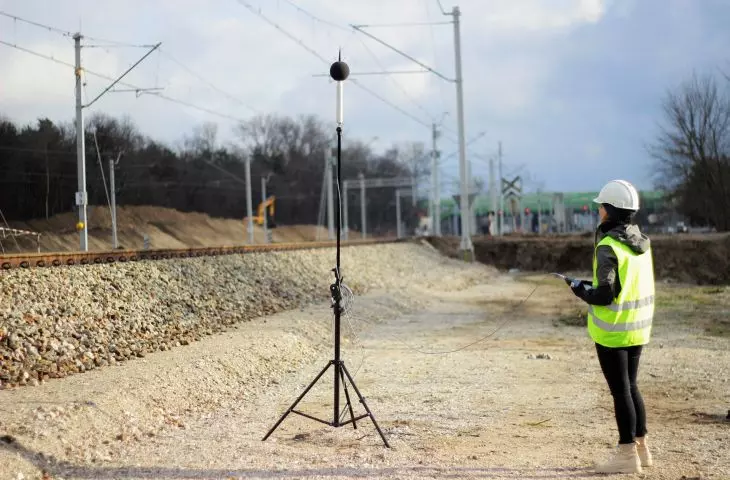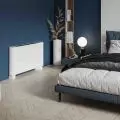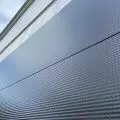As of August 2024, changes to the building regulations for residential acoustics will take effect. The amendment will affect the work of architects and acousticians.
Two legal acts are being amended:
- Decree of the Minister of Development and Technology of October 27, 2023 on the announcement of the unified text of the Decree of the Minister of Development on the detailed scope and form of the construction project,
- Ordinance of the Minister of Development and Technology of October 27, 2023, amending the Ordinance on technical conditions to be met by buildings and their location.
Originally, these ordinances were to take effect on April 1. However, on March 27, 2024, the Ministery published 2 regulations:
- Ordinance of the Minister of Development and Technology of March 27, 2024 on amending the Ordinance amending the Ordinance on technical conditions to which buildings and their location should conform,
- Ordinance of the Minister of Development and Technology of March 27, 2024 on amending the ordinance amending the ordinance on the detailed scope and form of the construction project.
Thus, at the moment, the Ordinance on technical conditions is in full force from August 1, while the Ordinance on the scope and form of the construction project from April 1, with the exception of the part on acoustic analyses. Therefore, all of the changes described below come into force only as of August 1.
The amendment introduces significant modifications in the field of acoustics, affecting the work of both architects and acousticians. In this article, we will analyze the most important of them, focusing on their impact on the design of residential buildings.
Changes to provisions in technical conditions
Thefirst step will be a close examination of the changes made to the technical conditions:
Before the change
§ 326. 2. 1) exterior walls, ceilings, interior walls, windows in the exterior and interior partitions and doors in the interior partitions - from airborne sounds
After amendment
§ 326. 2. 1) exterior walls, ceilings, interior walls, windows in exterior and interior partitions and doors in interior partitions - from airborne sounds, except that the entrance door to the apartment from the stairwell or general communication corridor should have a sound insulation of not less than 37 dB
The amendment additionally introduces a minimum sound insulation of 37 dB for the entrance door to the apartment. This change is intended to provide greater acoustic comfort for residents and reduce noise penetrating from outside. Unfortunately, it is not written what parameter is in question, which may cause doubts.
The PN-B-02151-3:2015 standard specifies the sound insulation of the door between the stairwell and the apartment depending on whether there is a hallway:
- RA1R ≥ 30 dB, where the apartment has a hallway separated by a door from the rest of the apartment;
- RA1R ≥ 35 dB in situations other than the above (no vestibule).
According to the definition of PN-B-0251-3:2015, the relationship between RA1 and RA1R (design ratio) is as follows:
RA1 =RA1R + 2 dB
In the absence of a hallway, the insulation of the entrance door must beRA1 ≥ 37 dB.
Since the regulation does not specify what parameter the entrance door should have, it is difficult to clearly define the meaning of this provision. It may contribute little if it refers to theRA1 parameter, or actually raise the required insulation by 2 dB if it refers to theRA1R parameter. However, based on the rationale for the introduction of the new regulations, which referred to ratios of 30 and 35 dB, we conclude that it is about theRA1R parameter.
Before the amendment of
§ 326. after para. 4
After amendment
4a. Internal walls and ceilings separating dwelling units in a single-family residential building should meet the acoustic requirements as for partitions between dwelling units in a multi-family residential building, as specified in the Polish Standard for required acoustic insulation of partitions in buildings
The amendment clarifies the requirements for acoustic insulation of partitions in single-family two-family buildings, popular in terraced housing. The previous regulations were questionable, not clearly stating whether higher standards should be applied as for semi-detached housing or lower standards as for a single-family building. The PKN's interpretation pointed to higher requirements, but detailed design guidelines were lacking.
The amendment brings order to the issue of sound insulation in terraced buildings, which is beneficial for the acoustic comfort of residents. A clear definition of the requirements and design guidelines in this regard will certainly make the specialists' work easier.
Before the amendment
326. after paragraph 4
After amendment
4b. In a residential building:
- single-family with two units,
- Single-family terraced or semi-detached,
- multi-family
- the performance of construction works in the premises may not deteriorate the acoustic requirements specified in the analysis of technical and material solutions to meet the acoustic requirements, referred to in the regulations issued pursuant to Article 34 paragraph 6 item 1 of the Law of July 7, 1994. - Construction Law
Until now, the regulations did not specify that construction works must not deteriorate sound insulation. Apartment owners, when making tenant alterations (e.g., moving walls or installing floor finish layers), often fail to ensure adequate sound insulation, leading to sound transmission problems. The amendment makes it clear that any tenant changes or finishing work must not lower the designed acoustic conditions.
The important thing is that the acoustic conditions specified in the analysis - in terms of technical and material solutions - must not be deteriorated. The provision does not refer to the standard, only to the requirements of the analysis. For example, if it stipulated that the interstitial wall, with the use of certain technical solutions, is to meet the condition of R'A1 ≥ 50 dB (the minimum requirements of the PN-B-02151-3:2015 standard), then under the new provision it is not allowed to reduce the value below R'A1 = 50 dB.
This provision also opens the door for higher acoustic requirements to be applied. If the acoustic analysis puts the requirements at R'A1 = 55 dB, construction work will not be allowed to deteriorate the conditions to a value below R' A1 = 55 dB, even though the insulation required by the standard is only R'A1 = 50 dB.
This provision may cause some controversy, since analysis at the design stage always involves calculation uncertainty. It would be clearer to refer to the results of field measurement, but this would require the introduction of acoustic acceptance of buildings or other regulations. At the moment, it will be difficult to verify unequivocally how construction works have affected sound insulation.
Technical conditions - new standards
The amendment updates the standards referenced in the appendix to the technical conditions. Below are the changes in this regard and their impact on building design.
Before the change
PN-B-02151-02:1987
After the amendment
PN-B-02151-2:2018-01
The PN-B-02151-2:2018 standard significantly tightens the requirements for acceptable indoor noise levels. The most important of these are:
1. changing the time constant SLOW to FAST.
The time constant determines how quickly a sound level meter responds to changes in noise intensity. Until now, the use of the SLOW time constant caused meters to respond more slowly to sudden changes, such as the impact of a fire gate. As a result, measurements of transient noise (for example - generated by drains draining water) showed lower values compared to measurements with the FAST time constant.
The difference in readings can be about 3-4 dB, and 3 dB corresponds to a doubling of acoustic energy. This has important implications for the selection and protection of technical equipment in buildings, such as:
- vibration isolation of elevator winches and guides;
- door closers and electric door openers;
- sewer pipes in shafts.
The revision of time constants will result in more unfavorable results of transient noise measurements, which may lead to the need for design modifications and better technical solutions in buildings.
2. lack of reference time for equivalent level and time of day
In PN-B-02151-2:1987, the equivalent sound level (averaged over time) was determined over a full reference time. It included the 8 most unfavorable hours during the day and 0.5 hours at night.
The permissible equivalent sound levelLAeq in dwellings was 35 dBA during the day and 25 dBA at night. This meant that noise withLAeq = 50 dBA in a residential room could last 900 seconds during the day and 5 seconds at night without exceeding the standard. This provided ample opportunity for generating sustained and intermittent noise, such as testing the smoke ventilation once a month or using it to ventilate the garage.
The revised standard does not take reference time into account, but instead focuses on the unit's operating cycles. A measured cycle level ofLAeq = 50 dBA means that the standard is exceeded by 25 dB both during the day and at night, since there is no variation in sound levels for different times of the day. On the one hand, this makes the job of acousticians easier (fewer measurements at night), but on the other hand, it makes it more challenging for designers to deal with plant noise.
3 Consideration of low-frequency and impulse noise assessment
Until now, measurements have been made with the A-weighted frequency curve, which roughly corresponds to how a person hears. However, it has some disadvantages because it does not take into account the annoyance of noise. Certain types of it, such as nail scraping on a blackboard and the sound of the sea, may have the same sound level, but their annoyance will be completely different.
The revised standard takes into account noise annoyance by making adjustments for impulsive noise (e.g., slamming doors), tonal noise (e.g., water pump noise) and low-frequency noise (e.g., ventilation). If any of these types of noise occur, a correction of k = 5 dB is added to the measurement result.
Before the change
PN-B-02156:1987
After amendment
PN-EN ISO 10052:2007
PN-EN ISO 16032:2006
The new standards introduce a completely different measurement technique, taking into account, among other things, low-frequency noise in the corners of rooms, reverberation time and frequency analysis of the signal. From an acoustician's perspective, this is a significant change, but without a lot of research, it is difficult to say conclusively at this stage whether the new evaluation method will affect the design process.
Prior to the change
PN-EN ISO 140-4:2000
After the change
PN-EN ISO 16283-1:2014-05,
PN-EN ISO 16283-1:2014-05/A1:2018-02
The changes to the standard regarding the insulation of the internal partition are cosmetic and will not affect the design process. This is a positive change, because until now the PN-B-02151-3:2015 standard recommended testing in accordance with PN-EN ISO 16283-1:2014-05, while the technical conditions were still based on the old PN-EN ISO 140-4 standard. Such inconsistency generated some ambiguity, so the unification of the provisions is a step in the right direction. Now it remains to wait for the implementation of the next standards in the PN-EN ISO 16283 series. Perhaps this will happen with the next revision.
Detailed scope and form of the construction project
In the entire regulation we can find only one change affecting design and construction acoustics. However, it is a change of great significance:
Before the amendment
§ 23 The descriptive part of the technical design includes at least:
4) structural and material solutions of internal and external building partitions
After the change
§ 23 The descriptive part of the technical design includes at least:
4a) an analysis in terms of technical and material solutions to meet acoustic requirements arising from regulations issued under Article 7, paragraph 2, item 1 of the Act, including in particular information on:
- (a) the level of noise in the vicinity of the building,
- b) the level of required acoustic insulation of partitions in the building, including for partitions between premises, windows, entrance doors to premises,
- c) building products that provide the required acoustic insulation of partitions referred to in letter b,
- d) the permissible level of noise and sound penetrating into the premises of the building and how to meet these requirements
- in the case of a single-family residential building with two units, a single-family terraced or semi-detached residential building or a multi-family residential building
In a nutshell, the amendment introduces the obligation to perform an "acoustic analysis" at the technical design stage for any single-family building with two units, terraced or semi-detached, as well as a multi-family building. This is probably the biggest and most important change of all. Until now, due to cost, this type of analysis was often omitted for terraced buildings, which, as numerous complaints from residents have shown, led to acoustic problems. It is hoped that the new regulations will improve living comfort and reduce the number of complaints.
© Falcon Acoustics
What to look for to assess the correctness of an acoustic analysis?
You can find more information on this topic HERE
Let's look at the various points that the analysis must include:
(a) "the assumed level of external noise affecting the building".
The regulation does not indicate precisely how to determine the level of external noise. However, there are three basic methods described in PN-B-02151-3:2015: acoustic maps, noise simulations and measurements. The choice of the appropriate method depends on the size of the investment and the type of noise present.
Although acoustic maps are the simplest way to determine external noise, they involve a number of limitations and rarely sufficiently meet the needs of acoustic analysis. Even the PN-B-02151-3:2015 standard clearly states:
If an acoustic map of the area in question is used to determine [external noise - author's note], a possible correction should be made to the values adopted from the map to take into account changes in the level of external noise at heights above 4 meters, as well as changes related to local sound propagation conditions, as determined by calculations and/or supplementary acoustic measurements.
A far better solution is to conduct your own noise and/or traffic volume measurements. This will allow you to accurately determine the distribution of noise on the building facade and optimize the acoustic insulation of windows. For small developments located in quiet neighborhoods, measurements may not be necessary, but in most situations it is advisable to take them or conduct noise simulations.
(b) "the level of required sound insulation of partitions in the building, including for partitions between premises, windows, entrance doors to premises."
This point clearly dictates the requirements for internal and external partitions. The PN-B-02151-3:2015 standard specifies these requirements, so it is necessary to cite them and determine which of them are relevant in a particular case.
(c) "construction products that provide the required sound insulation of partitions referred to in letter b".
This provision mandates explicitly to enter which construction products meet the sound insulation requirements for the interior and exterior partitions, as specified in the previous section. Although the presentation of calculations is not mandatory under the provision, their correct execution is essential for a reliable assessment of whether a material will meet these requirements. This is due to the fact that:
- laboratory test results, made available by manufacturers, do not take into account the transmission of lateral sound between rooms, which takes place in real conditions. The PN-B-02151-3:2015 standard mandates consideration of this phenomenon;
- isolation of external partitions must be calculated taking into account the level of external noise, the resultant isolation of all elements of the partition, their number and area.
Only correct calculation guarantees compliance with the requirements of PN-B-02151-3:2015.
(d) "the permissible level of noise and sound penetrating into the premises of the building and how to meet these requirements - in the case of a single-family residential building with two units, a single-family terraced or semi-detached residential building or a multi-family residential building."
This point precisely prescribes the determination of permissible sound levels, generated by the technical equipment of the building, and the indication of how to meet these requirements. It is therefore necessary to carry out an analysis in which the acoustic designer proves that appropriate protection measures have been applied.
However, it should be noted that there is some ambiguity in this point. Polish regulations do not define standards for carrying out calculations or guidelines for insulating technical equipment in buildings. Therefore, the analysis will be largely based on the designer's empirical experience and the manufacturer's declarations.
Summary
The article presents the most important changes relating to the regulation on the detailed scope and form of construction design and technical conditions.
The new regulations impose a number of obligations on designers, strengthening and unifying cooperation between acousticians and architects. Unfortunately, the lack of detailed explanations and comments can lead to ambiguous interpretation of the regulations by various authorities.
Despite some inconveniences, the Falcon Acoustics team is fully prepared for the new challenges. We have the knowledge and experience necessary to meet all requirements and provide our clients with acoustic comfort at the highest level. Need an acoustic analysis? Contact our professional acousticians.
Need an acoustic analysis?
Contact the professionals - CLICK HERE


















